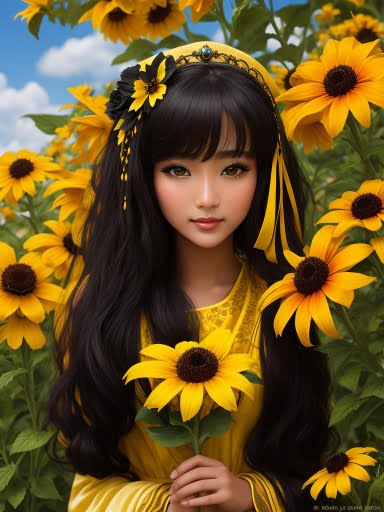Once upon a time, in the verdant heartlands of North America, there lived a queen among flowers, known to all as the Black-Eyed Susan. Bathed in warm tones of sun-kissed yellow and crowned with a velvety black cap, she was a beacon of beauty in the realm of flora. It was not only her vibrant appearance that earned her the adoration of the kingdom, but her generosity to the whimsical guests, the butterflies, that truly made her a legend.

From the tender buds of spring to the golden hues of autumn, Queen Black-Eyed Susan unfolded her petals to welcome the enchanting butterfly visitors. Swallowtails, Monarchs, Skippers, Painted Ladies, and many more were entranced by her radiant charm and the sweet, life-sustaining nectar she offered so freely. In the vast meadows and gardens across the continent, a fairy-tale unfolded every day, where the dance of butterflies around Black-Eyed Susans painted a scene right out of a dreamy impressionist canvas.

The Black-Eyed Susan, scientifically known as Rudbeckia hirta, is a true North American native. Her kingdom stretches from the majestic Rockies to the charming coastal meadows, bearing a heart hardy enough to withstand the diverse climates. As an indigenous flower, she evolved along with the native butterfly species, her bloom times, nectar content, and petal shape harmoniously synchronized with the butterflies’ life cycles and needs.
